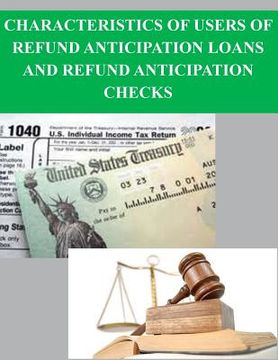Characteristics of Users of Refund Anticipation Loans and Refund Anticipation Checks (en Inglés)
Reseña del libro "Characteristics of Users of Refund Anticipation Loans and Refund Anticipation Checks (en Inglés)"
Refund anticipation loans (RALs) are bank loans secured by the taxpayer's expected refund and Refund anticipation checks (RACs) are temporary bank accounts established on behalf of a taxpayer into which a direct deposit refund can be received. The goal of this project is to provide greater information on the characteristics of RAL/RAC users and why they choose these products.We find that among the most important characteristics influencing RAL/RAC use were lower income, young adulthood, single head-of-household filing status, receipt of the Earned Income Tax Credit (EITC), and use of a paid preparer. We also find that RALs and RACs are highly spatially concentrated and that living in the poorest communities is associated with dramatic increases in use of these products, even after controlling for a taxpayer's income and filing status. Also, for the first time, we found some unique differences in the use of RALs versus RACs according to such variables as military status. Finally, we find that individuals with any interest and dividend income used RALs and RACs to a much smaller degree than did those with otherwise similar characteristics.RALs and RACs are used by one in seven tax filers-and more than one in six filers who receive refunds. Taxpayers are able to receive their refunds more quickly than a mailed check by using RALs, often in one to three days. RACs are no quicker than other IRS direct deposit returns, but for those who lack a bank account, and/or would receive a paper check, they may speed up receipt of refund by up to six weeks. Both RALs and RACs enable payment of tax preparation fees out of the expected refund.To gain a better understanding of RAL/RACs, this report is broadly divided into two sets of research questions. The first examines who obtains them and who does not and what demographic, economic, and geographic factors are associated with the use of these products. Using individual-level IRS tax-filing data from tax year 2008, we provide descriptive breakdowns of many individual and geographical characteristics that are linked with use of RALs/RACs. We then run cross-sectional taxpayer-level multivariate models to explain what characteristics are associated with take-up of RALs/RACs, including both personal factors that are captured in individual level tax administration data as well as local factors compiled from several (non-IRS) administrative data sets. This quantitative analysis was conducted on IRS-provided data on millions of tax filers who received a refund in tax year 2008. With this data set, findings are statistically significant for the population of US tax filers.The second set of research questions examines why these products exist, using interviews with industry stakeholders. This research was qualitative in nature. What motivates taxpayers to use RALs and RACs? What role do tax preparers play? And what other (and lower-cost) credit options are available at tax time for low-income taxpayers? To address these questions, we conducted 18 interviews with 11 organizations: tax preparers, RAL/RAC providers, RAL/RAC tax form software developers, low-cost RAL lenders, and Volunteer Income Tax Assistance (VITA) program sites that provide free tax preparation services and partner with low-cost RAL lenders. We found, in summary, that most RAL and RAC recipients use these products to pay for pressing financial obligations, both expected and unexpected, and for their tax preparation. RAL/RAC users, particularly those claiming the EITC, are driven to paid preparers by the complexity of filing a tax return. Stakeholders from the RAL/RAC industry do not feel that consumers use these products because they fail to understand that they are loans or because they are not aware of the fees involved. Consumer advocates disagree, claiming that use is partly driven by aggressive, targeted marketing.

